The Safavid Empire, which was founded as a political dynasty in 1501, was the second Great Islamic Empire to form. It originated as a religious sect, and it acquired the military and political traits of an empire only after 1501. The Safavid Empire also differed from the Ottoman and Mughal Empires because it was an official Shi’ite empire. religious differences led to much hostility between the Safavids and its Sunni rivals. The Safavid Empire was formed in 1501 and ended by the invasion of Afghans in 1722. It forever influenced Persian nationalism.
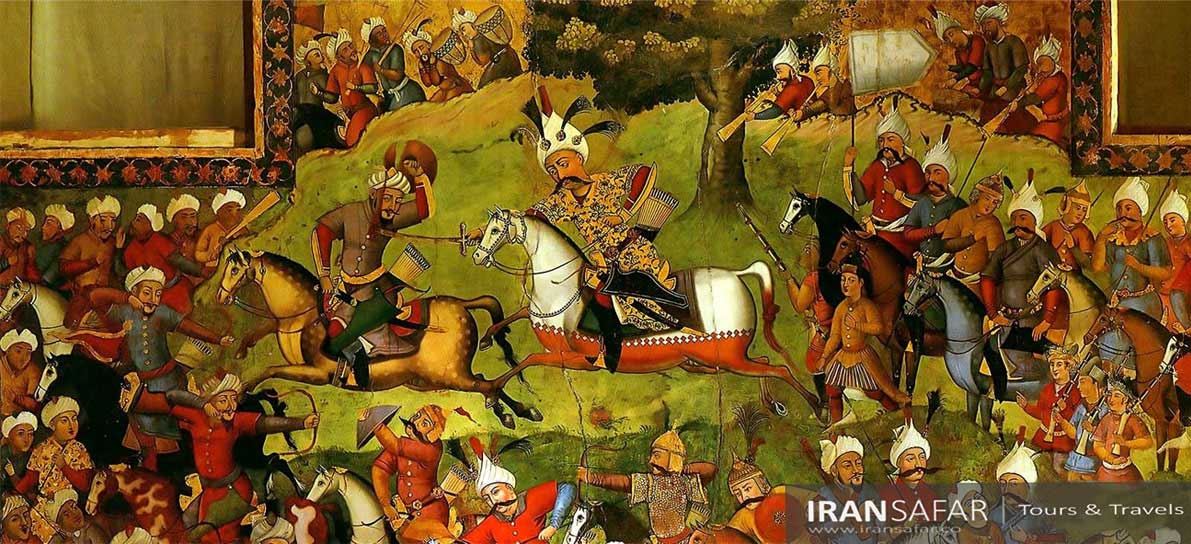
Who were Safavids?
Safavids (1501–1736), the dynasty that took control of Persia in the early 16th century, is often considered the beginning of modern Persian history. Safavid’s establishment of Twelver Shiʿism as the Iranian state religion was a major factor in the emergence of a united national consciousness among the various ethnic and linguistic elements of the country.
As Shi’ism spread during the 15th century, so did the Shi’ite Sufi orders, and their forces increased. The oldest Shi’ite sufi order at this time was attributed to the Safavid Sufi family, descendants of Sheikh Safi al-Din of Ardabil – head of the Sufi order of Ṣafaviyeh – who gradually established power in Azerbaijan region and the surrounding area. They provided a monarchy-like system until, as we know, they came to the kingdom of Iran at the beginning of the 16th century.
Throughout the Iranian history, the emergence of the Safavid dynasty is an important turning point; after centuries of being under control of foreign rule, Iran is once again becoming a powerful and independent state in the Islamic East. The Mongol invasions that began in the 13th century drastically reconfigured the Islamic world. Not only did the invasions bring about the end of the Abbasid Empire and leave the center of Islamic world fractured, but the arrival of new Turkic peoples and dynasties throughout much of Islamdom shifted the axes of power into the hands of Turkic clans. The Ṣafavi order at Ardabil, however, was distant enough from any political center to remain neutral, allowing the Persian mystics to build a strong following of their own.
Safavid Empire’s Religion
Through their remarkable achievements, the Safavids reunified Iran as an independent state in 1501 and established Twelver Shi’ism as the official religion of Persia, marking one of the most important turning points in the history of Islam. Twelvers believe that the Twelve Imams are the spiritual and political successors to Prophet Muhammad. According to this theology, the Twelve Imams are exemplary human individuals who not only rule over the community with justice, but are also able to preserve and interpret Shari’a and the esoteric meaning of the holy Quran. The words and deeds (Sunnah) of Muhammad and the Imams are a guide and model for the community to follow; as a result, Prophet Muhammad and the Imams must be free from error and sin, a doctrine known as Ismat or infallibility.
Shah Isma’il I (r. 1501-24)
It was under Ismāʿil I (r. 1501-24), that the Safavids evolved from a spiritual movement to a political dynasty led by a shah rather than a Sheikh. This was achieved with the assistance of the Qizilbāsh, who venerated their leader as an incarnation of God and were blindly obedient to him, even offering themselves for martyrdom in his cause.
With Azerbaijan seized, Esmaʿil, barely 15 years of age, inaugurated Safavid political rule in 1501 by proclaiming himself king in Tabriz, having coins struck in his name and declaring the city his capital.
In August 1514 Ismaʿīl was seriously defeated at Chaldoran by his Sunni Turkish rival, the Ottoman Sultan Selim I. Thereafter, the continuing struggle against the Sunnis—the Ottomans in the west and the Uzbeks in the northeast—cost the Safavids Kurdistan, Diyarbakır, and Baghdad, while Tabriz was continuously under threat. Iran weakened appreciably during the reign of Ismaʿīl’s eldest son, Shah Tahmasp I (1524–76), and persistent and unopposed Turkmen forays into the country increased under his incompetent successors.
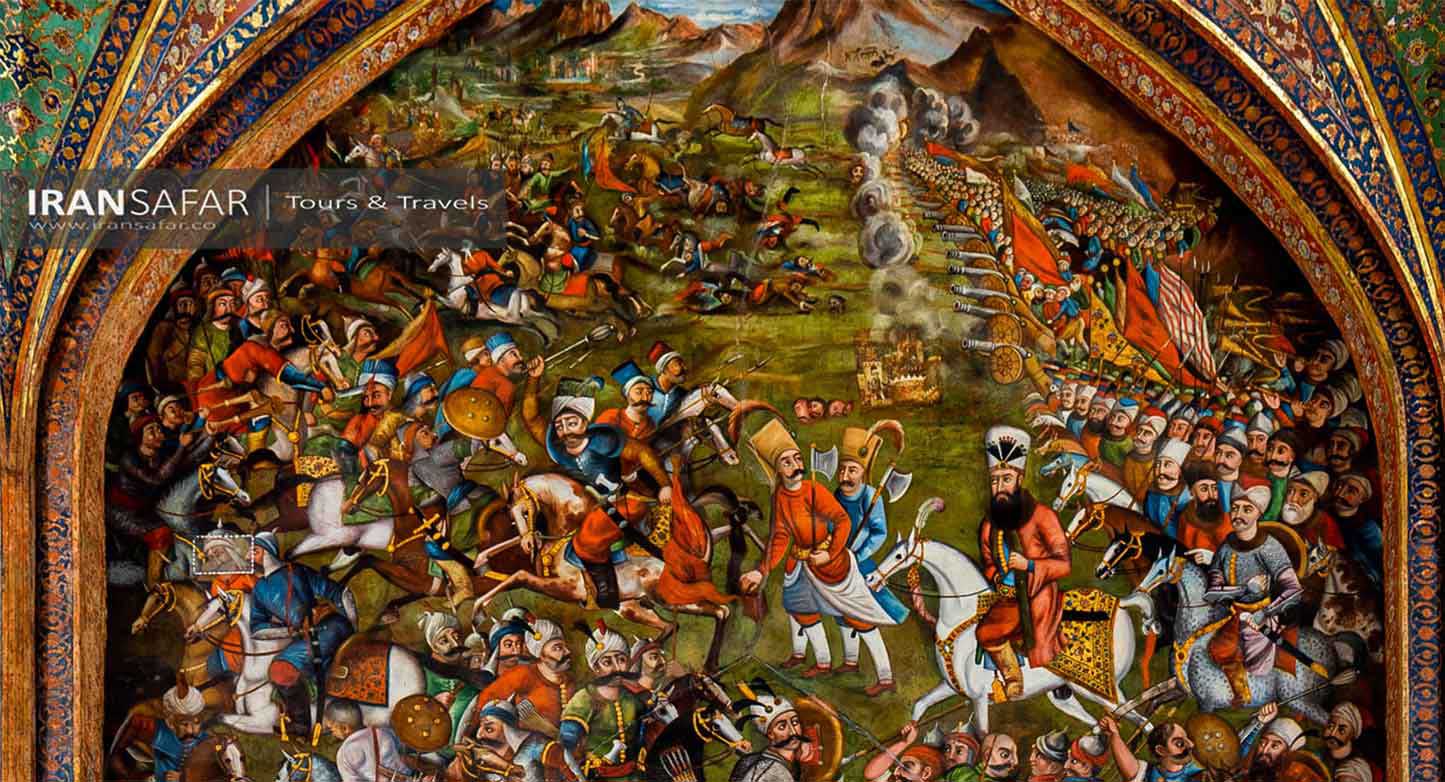 Painting demonstrating the Chaldoran battle, Chehel Sotoun Palace, Isfahan, Iran
Painting demonstrating the Chaldoran battle, Chehel Sotoun Palace, Isfahan, Iran
Chaldoran Battle
Shah Abbas I (r. 1588-1629)
In 1588, Abbās I (the great) was crowned. Realizing the limits of his military strength, Shah Abbas made peace with the Ottomans on exceptional terms in 1590 and directed his destructive attacks against the Uzbeks. Meeting with little success, Abbas engaged in a major army reform. The strength of the “Qizilbash” was reduced, while the use of firearms was expanded. The young king equipped the Iranian army with artillery and rifles with the help of the British “Shirley Brothers“, and took the position of commander from effete Qizilbash. Three bodies of troops were formed, all trained and armed in an early modern manner and paid out of the royal treasury: the Ghulāms (slaves), the Tofang-chīs (musketeers), and the toop-chīs (artillerymen). With his new army, ʿAbbās defeated the Turks in 1603, forcing them to relinquish all the territory they had seized, and captured Baghdad. He also expelled the Portuguese traders who had seized the island of Hormuz in the Persian Gulf early in the 16th century.
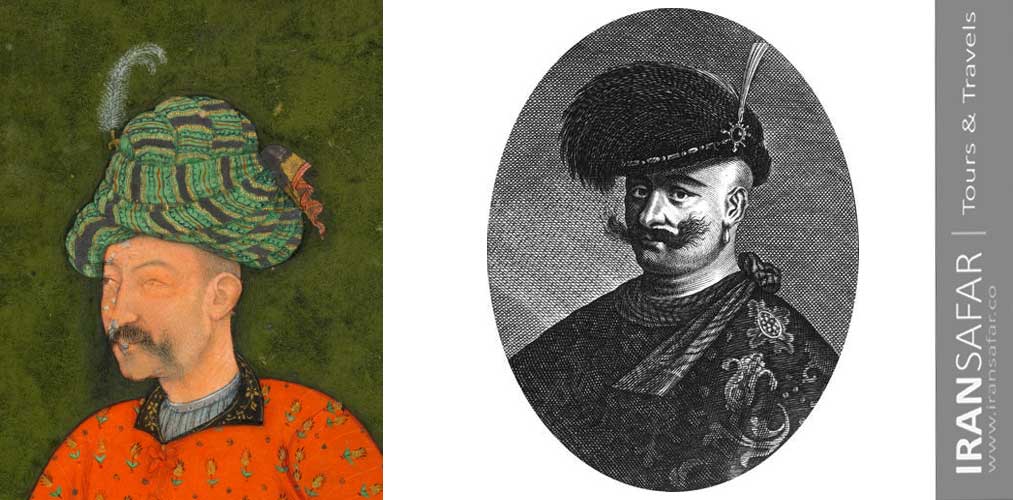 Shah Abbas the Great
Shah Abbas the Great
Shah Abbas’s remarkable reign, with its striking military successes and efficient administrative system, raised Iran to the status of a great power. Trade with the West and industry expanded, communications improved. He moved the capital from Qazvin to Iṣfahan and made it the center of Safavid architectural achievement, manifest in the Shah Mosque of Isfahan (called Masjed-e Imam after the 1979 Iranian Revolution), Sheikh Loṭfollah mosque, and other monuments including the Aalī Qāpū, the Chehel Sotoon palace, and the Naqsh-e Jahan square. Despite the Safavid Shiʿit zeal, Christians were tolerated and several missions and churches were built in Isfahan Julfa neighborhood.
In 1598, Abbas the great moved the Safavid capital to Isfahan from Qazvin, which had itself taken over from Tabriz, on the Ottoman border, 50 years earlier. Isfahan was located in the center of Persia, and thus it was not as vulnerable to attack as Tabriz or Qazvin. Abbas adorned Isfahan, which had also been the Seljuk capital centuries earlier. Under Abbas, Isfahan became one of the world’s greatest cities.
Safavid Dynasty Empire Map
The Safavids ruled from 1501 to 1736. At their height, they ruled over all of what is now Iran, Azerbaijan Republic, Bahrain, Armenia, eastern Georgia, parts of the North Caucasus, Iraq, Kuwait, and Afghanistan, as well as parts of Turkey, Syria, Pakistan, …
Fall of the Safavid Dynasty
After Shah Abbas the Great died in 1629, his successors ruled for about a century, but, except for an interval during the reign of Shah Abbas II (1642–66), it was a period of decline.
In the late 17th and early 18th centuries, the Safavid Empire began to break up. Since peace was made with the Ottoman Empire, there was no longer a need for strong military forces. As a result, further fragmentation took place in the empire. In addition to this, the following kings who came in power became more and more incompetent. During the reign of Shah Soleiman, who ruled from 1667 to 1694, famine and disease spread throughout the country. His successor Shah Sultan Hossein (r.1694 to 1722) was the main cause of the end of the Safavid Empire. He appointed a member of Shia’a religious establishment, Mohammad Baqir Majlesi, to top positions. Majlesi and some of the Shia’a clergy slowly took control of the empire and overthrew the regime. Sultan Hossein’s rule was relatively peaceful until he faced a huge revolt in Afghanistan, in the easternmost part of his kingdom.
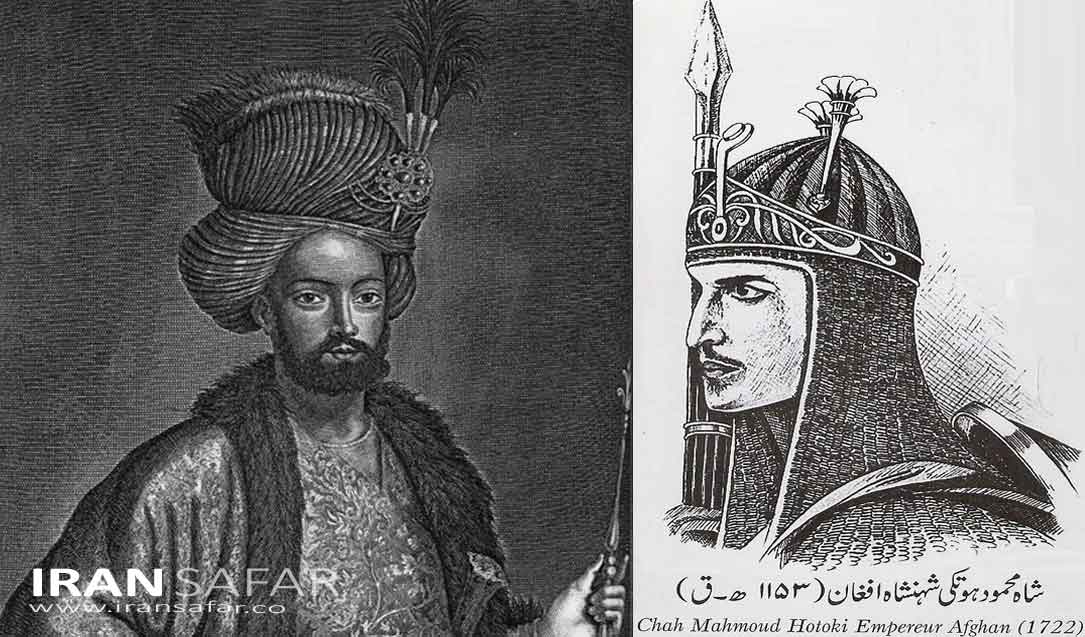 Left: Shah Sultan Hossein Safavid | Right: King Mahmoud Afghan
Left: Shah Sultan Hossein Safavid | Right: King Mahmoud Afghan
At that time, the Afghans were divided into two major tribes: the Ghilzais and the Abdalis. In 1709, the Ghilzai Afghans of Qandahar, under their leader Mirwais, rebelled and successfully broke away from Safavid rule. In 1722, Mirwais’s son Mahmud and his army swept westward aiming at Iranian capital Isfahan itself.The king was urged to escape to the neighboring provinces to gather more troops but he decided to remain in the capital which was now surrounded by the Afghans. Mahmud’s siege of Isfahan lasted from March to October, 1722. Starvation and disease finally forced Isfahan into submission (it is estimated that 80,000 of inhabitants died during the siege). On 23 October, Sultan Hossein abdicated and submitted the crown to Mahmud Afghan as the new shah of Persia. At the same time, the Ottomans and the Russian Peter the great began seizing territories in Iran and the Safavid Empire came to a complete end in 1736.
Seven years after that Iṣfahan fell to the Ghilzai Afghans of Qandahar, Sultan Hussein’s son, Tahmasb II recovered Iṣfahan and ascended the throne, only to be deposed in 1732 by his army general Nader Gholī Beig (the future Nadir Shah Afshar)
Safavid Art
Usually in Iran, the royal family and people from the upper social classes applied for works of art and helped it to flourish. The Safavid kings were also lovers of art, and some of them, such as Shah Tahmasp I and prince Sam Mirza, were themselves expert artists and held art in high esteem. The Safavids in many cases, especially in terms of painting, inherited the art of the Timurids. Manuscript illustration was prominent in royal patronage. Tahmasp who had been trained in painting at an early age, was an active patron of the arts of the book. During his reign, one of the aspects of the art of painting, namely Miniature Art, reached perfection and the king himself spent a lot of time learning it. Most of the prominent artists of that era were considered to be the king’s friends or of his courtiers. Shah Tahmasb was also very skilled in Tazhib.
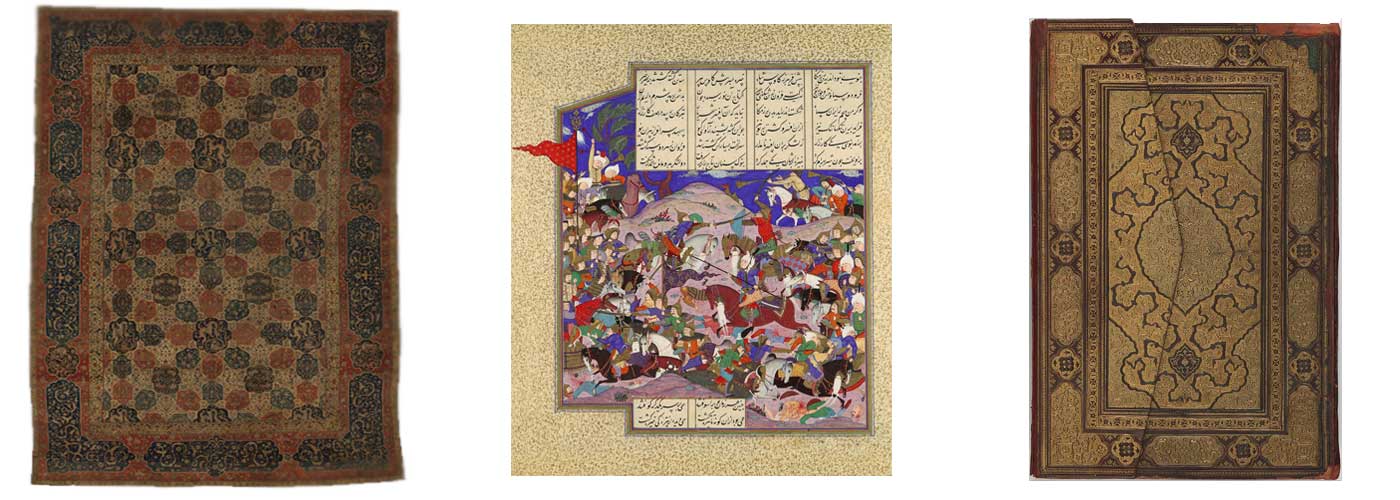
The most distinguished of Safavid rulers and the greatest patron of the arts was Shah Abbas I. His reign was recognized as a period of military and political reform as well as of cultural florescence. Shah Abbas did not have such an attachment to painting, instead, he paid much attention to architecture and urban planning. In terms of technical characteristics, the art of painting changed during the Safavid rule. For example, instead of portraying heroes and myths, much attention was paid to depict aspects of ordinary people’s life.
Safavid Carpets
The summit of Persian carpet design and production was truly attained under the Safavid empire (1502-1739). It was the result of a unique concurrence of royal patronage, the influence of court designers at all levels of artistic production, the wide availability of both local and imported materials such as high quality dyes, and market acceptance, particularly in Europe.
Although almost no example of 15th century Persian textile survives today, the high level of quality achieved early in the Safavid period can be confirmed by foreign travelers who visited Iran in Safavid times. On the other hand, emergence of carpets in 15th century Iranian paintings suggest that a developed carpet-weaving industry already existed in the century before the Safavids came in power. Surviving Safavid carpets represent both court production (carpets manufactured to court standards but not necessarily used at the court) and commercial production, which often reflects courtly tastes. Carpets were woven in palace workshops and on urban and village looms. No example of a nomadic rug remains from the Safavid era, but such carpets surely existed well before courtly and commercial interests engendered an urban industry.
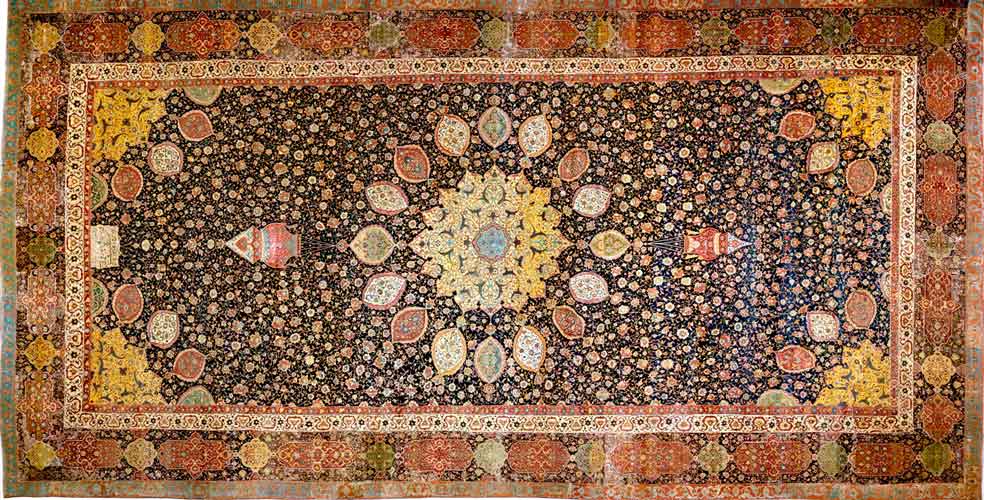 The Ardabil Carpet (1539), Victoria and Albert Museum, London.
The Ardabil Carpet (1539), Victoria and Albert Museum, London.
Safavid Empire Timeline
〇 ISMAIL I
1501-1524
Establishment of the empire
〇 Battle Chaldoran
1514
Iran defeated
〇 TAHMASP I
1524-1576
〇 Ottomans capture Baghdad
1533
〇 ISMAIL II
1576-1578
〇 SULTAN MOHAMMAD
1533
〇 ABBAS I
1588-1629
Isfahan chosen as capital
〇 SAFI I
1629-1642
〇 ABBAS II
1642-1666
〇 SULEIMAN I
1666-1694
〇 SULTAN HOSSEIN
1694-1722
〇 AFGHAN INVASION
1722
Isfahan captured
〇 TAHMASP II
1722-1732
〇 TAHMASP II deposed
1732
by Nader Gholi
〇 ABBAS III
1732-1736
Nader rules as Regent
〇 NADER
1736
End of Safavid Empire

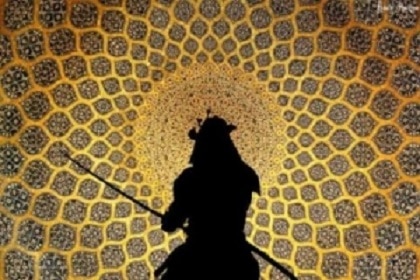
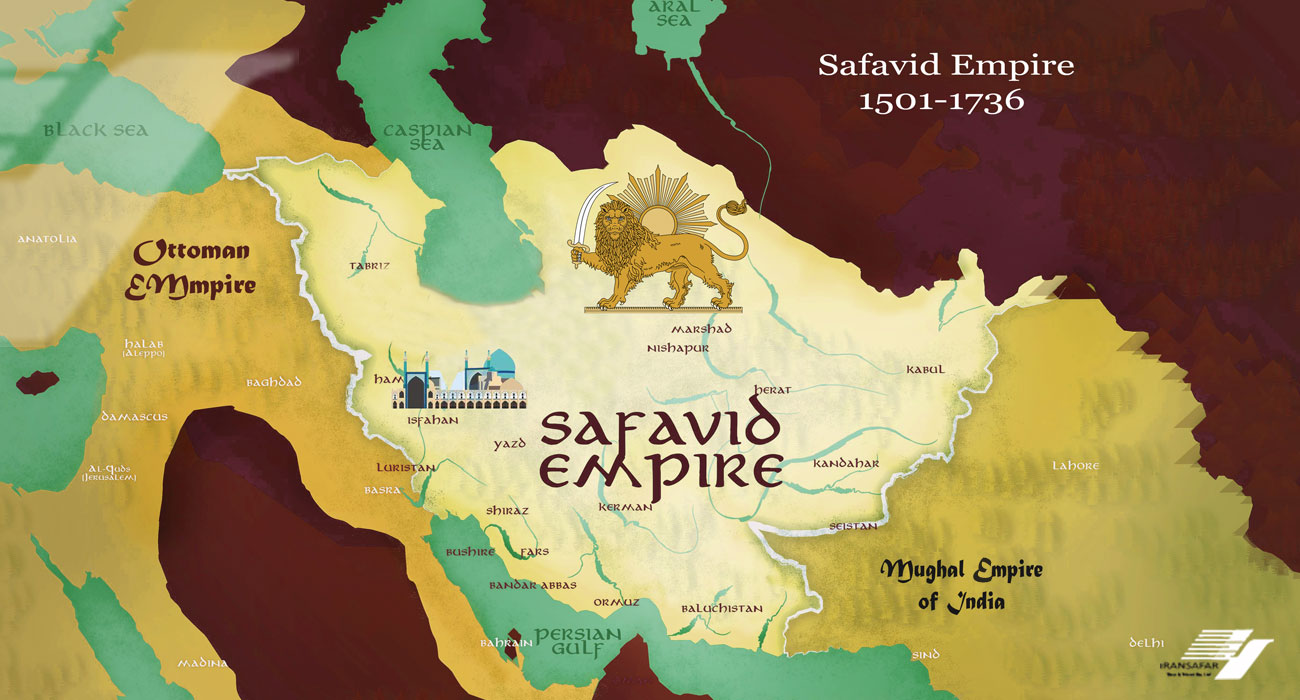

Comment (0)